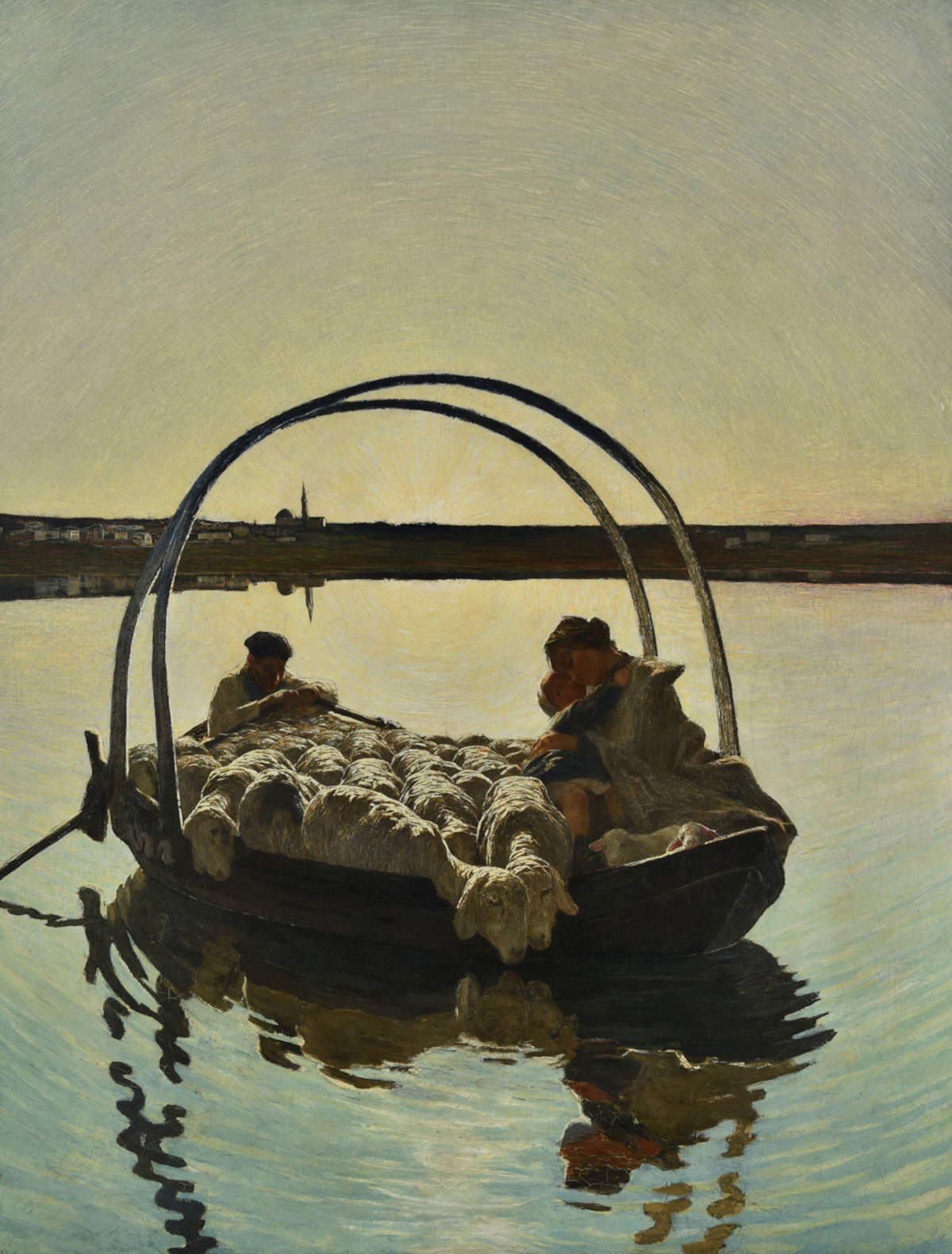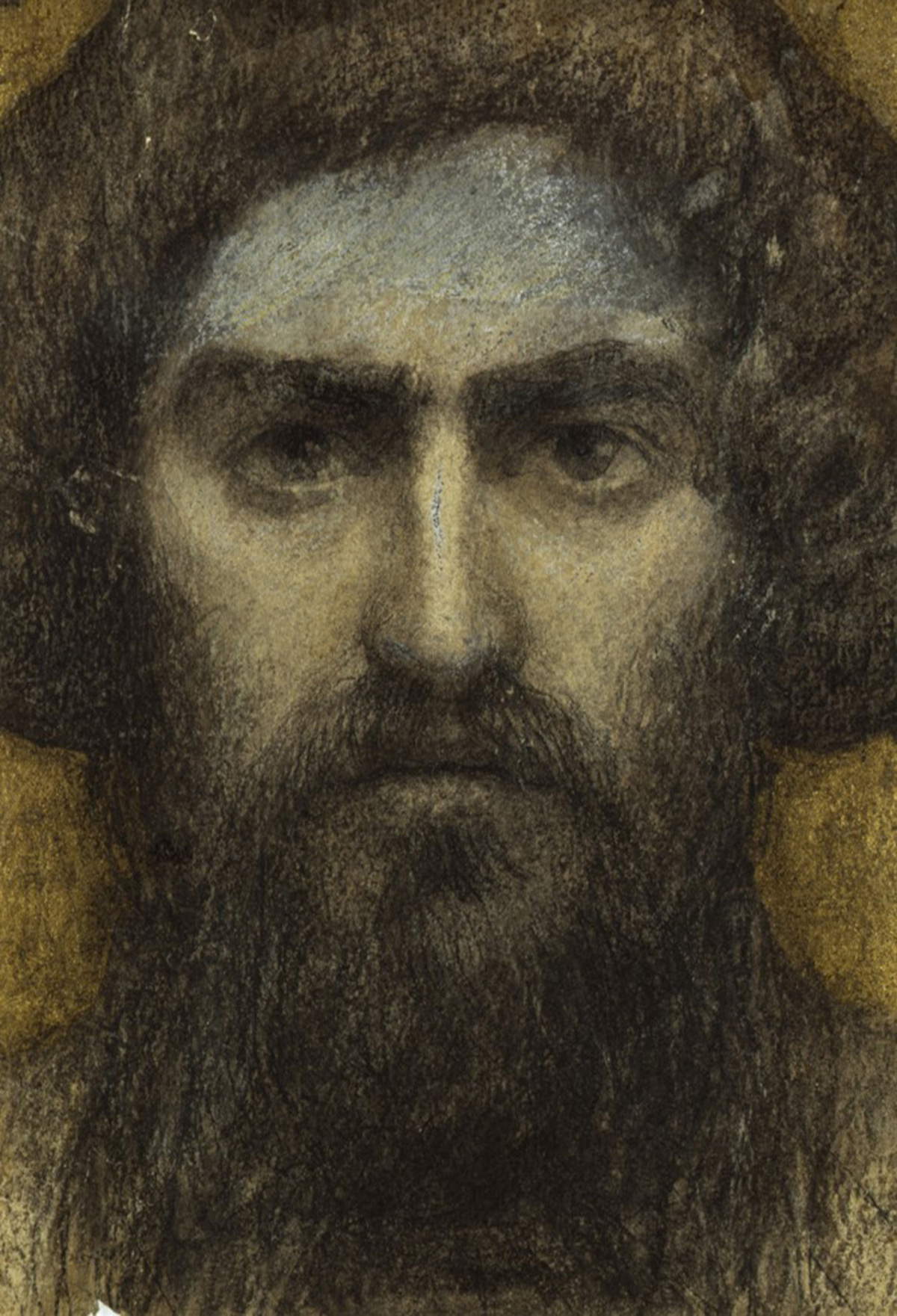The Civic Museums of Bassano del Grappa will host from Oct. 25, 2025 to Feb. 22, 2026 the major Giovanni Segantini exhibition that aims to celebrate the life and work of one of the greatest exponents of Italian Divisionism. Curated by Niccolò D’Agati and promoted and organized by the City Council and the Civic Museums of Bassano del Grappa, under the patronage of the Veneto Region, with the support of the Segantini Museum in St. Moritz and the Galleria Civica G. Segantini di Arco and in collaboration with Regione Lombardia and Dario Cimorelli Editore, the exhibition aims to reconstruct the figure of the painter through an unprecedented rereading of his work by comparing it with art contemporary to him, in order to recount a career that in just 20 years, from the “scapigliati” beginnings to the last Symbolist impulses of capturing Nature, was able to influence the major artistic movements of his time.
The exhibition will retrace in chronological order the milestones of the Arcense artist’s career through national and international loans from some of Europe’s most important museums, including the Musée d’Orsay in Paris, the Rijksmuseum in Amsterdam, the Kunsthaus in Zurich, and the Galleria d’Arte Moderna in Milan. About 100 works including paintings, drawings, etchings, as well as photographs and archival documents will be on display. The exhibition aims to be one of the most comprehensive and richly innovative in recent years, with the goal of letting the public discover, with a fresh look, one of the most extraordinary painters of the Italian and European 19th century, who was able to interpret, with extraordinary sensitivity the relationship between man and nature.
The exhibition is part of the official program of theMilan Cortina 2026 Cultural Olympiad, an initiative that accompanies the Olympic and Paralympic Winter Games with a rich calendar of cultural events spread throughout the country.
Born in Arco but moving to Milan in 1865, Segantini spent a troubled childhood in the Lombard capital, forced into a correctional institution from which he would attempt to escape several times. Art would become part of his life, thanks to his experience as an apprentice in the workshop of master Luigi Tettamanzi, a photographer and painter of banners, signs and banners, but above all with his attendance at the Brera Academy from 1875, where he would have the opportunity to start his artistic research.
It is precisely from his debut at Brera that the exhibition begins, with a chronological-geographical itinerary, divided into four sections and thematic focuses, that will follow the most important junctures of his biographical story in relation to his movements between Milan, Brianza and Switzerland, emphasizing the evolution of his painting.
The Milanese phase, the subject of the first section, is marked by his meeting with Vittore Grubicy De Dragon, as well as his direct confrontation with the legacy of Scapigliatura and colorist naturalism. In this lively context, his innate propensity for studying the expressive potential of light and color is defined through a rich variety of subjects: from portraits to still lifes, from genre compositions to landscape and urban views, up to the more experimental works of literary inspiration.
At the end of 1880 Segantini left Milan to move to Brianza and devote himself to a country life. In the context of a renewed conception of the use of color and in its emotional and sentimental values, he tried his hand at more variants of the same subjects, devoting himself to a pastoral painting that rejects traditional Italian generism. The second section of the exhibition itinerary, devoted to the Brianza phase, concentrates works characterized by a growing interest in nature, represented in the union of man, landscape and animals. The analysis of this phase, which represents one of the most important novelties of the exhibition, also leads back to the strong link with the French artist Jean-François Millet, which opens up significant comparisons with the artistic culture of the late nineteenth century, marked by the Milletian ascendancy, as happens with the production of Vincent Van Gogh and, in a more direct way, with the works of the artists of the Hague School who will be placed for the first time in relation to his painting.
The third section will instead be devoted to the Swiss phase, which began in 1886 with Segantini’s move to the small town of Savognin. During this stay the artist would devote himself to his large compositions of mountain life, in which we can read his personal interpretation of the pantheistic relationship between Man and Nature. An experimentation that would lead him to stand out among the major protagonists of Italian Divisionism, starting with the 1891 Milan Triennial Exhibition of Fine Arts.
The last decade of Segantini’s production will finally be the protagonist of the fourth and last section of the exhibition, when, starting in 1894, Segantini moved to Maloja. He would then paint according to the formula of “naturalistic symbolism”: an experimentation in a symbolist key anchored in the evocative power of the mountain life scenes that surrounded him. It was precisely this obsessive research that would lead Segantini to an untimely death: with the aim of finishing the central painting of his great triptych, Natura, the Arcense painter in fact went to the high mountains near Schafberg, where the frenetic pace of work along with the high altitude would make him ill with peritonitis, ending his life at only 41 years old.


Segantini’s art has often been considered in a dimension of romantic isolation, intended to reflect the myth of a heroically solitary artist. Instead, the aim of this exhibition is to bring his work back into the framework of a broader investigation of the artistic and cultural contexts that influenced him and are thus fundamental to the understanding of Giovanni Segantini.
Accompanying the exhibition will be a scholarly catalog published by Dario Cimorelli Editore, which will include contributions from leading scholars of Segantini’s work, with extensive apparatuses dedicated to the reconstruction of his artistic path, his painting technique and the most recent diagnostic investigations, which will be returned to the exhibition thanks to interactive technological apparatuses, in addition to the reasoned files of the works on display.
“The Giovanni Segantini exhibition will bring one of the greatest Italian and European painters of the 19th century back to the attention of the general public and scholars alike, thanks to a retrospective full of novelties and surprises; not the least of which is the possibility to admire, reunited together for the first time in more than a century, some of his most significant masterpieces tracked down for the occasion,” said Barbara Guidi, director of the Civic Museums of Bassano del Grappa. “The result of collaboration with the Segantini Museum in St. Moritz and the Galleria Civica G. Segantini of Arco, the exhibition will dispel the myth of the isolated genius to deliver us a Segantini perfectly integrated into the figurative debates of his own time, a daring experimenter in pictorial techniques, and inventor of an iconography of the mountain so powerfully evocative, charged with poetry and sentiment, as to be eternal and unbreakable in its secular sacredness. An eternity today challenged by the sudden climate change that makes this subject overwhelmingly relevant.”
“We are very happy and also proud to be able to support this important exhibition project, which we hope will have the success it deserves,” commented Mirella Carbone, Artistic Director of the Segantini Museum in St. Moritz. “We are grateful to the City and the Civic Museums of Bassano del Grappa for their interest in holding an exhibition on Giovanni Segantini, although the artist has no direct connection to the city or region. And we are grateful to Dr. D’Agati for the sound scholarly project: thanks to this exhibition to the general public Segantini will finally be presented as an artist closely linked to contemporary European artistic currents, so as to dispel the myth of the lonely vate on the Alpine peaks.”
“The City of Arco and its Civic Gallery cultivate with dedication the memory of the painter Giovanni Segantini, who was actually born in Arco,” said Giancarla Tognoni, Director of the Civic Gallery G. Segantini of the City of Arco. “We are therefore extremely pleased to contribute to the realization of this truly extraordinary project proposed by the Civic Museums of Bassano del Grappa, believing that the figure of Segantini is extremely significant for all Alpine territories and therefore identifiable across the board for European culture. We sincerely thank the City of Bassano del Grappa and its Civic Museums, as well as the curator Niccolò D’Agati, for having involved us in this experience, which also sees the highly qualified participation of the Segantini Museum in St. Moritz, with whom we have shared numerous studies and research in recent years.”


 |
| A major exhibition in Bassano del Grappa traces the art of Giovanni Segantini |
Warning: the translation into English of the original Italian article was created using automatic tools. We undertake to review all articles, but we do not guarantee the total absence of inaccuracies in the translation due to the program. You can find the original by clicking on the ITA button. If you find any mistake,please contact us.